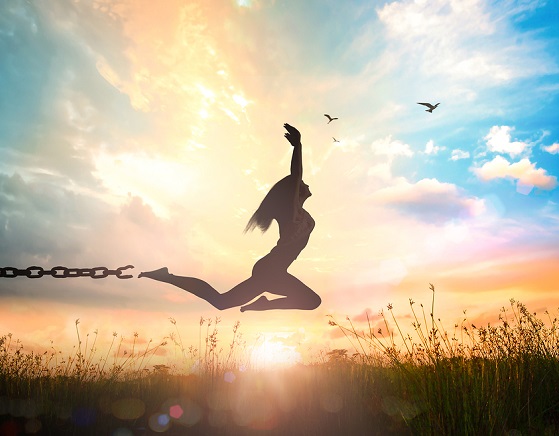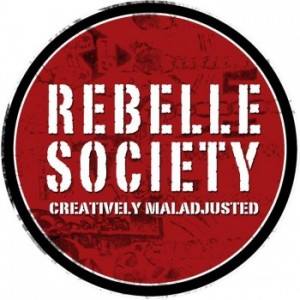Yoga for the Incarcerated: Moksha Behind Bars.

If one reads and derives meaning from yogic spiritual texts, the takeaway is finding kindness through service without being attached to the outcome.
During the last weekend of March, two representatives, who brought light to this takeaway, graced the Midwest, specifically, Rochester Hills, MI for the first time ever, with their presence. The Prison Yoga Project (PYP) is now spreading virally around the globe and the rest of the country.
17 years ago, James Fox, the founder of the project, began teaching yoga at San Quentin State Prison. Now, yoga is taught regularly in jails and prisons in the state of California. Prison Yoga Project has trained more than 1,000 teachers who currently teach in more than 75 prisons, jails, and recovery centers in the US and abroad.
The movement starts with people and conscious relationship. Bill Brown, a Buddha-like warm-hearted Generation Xer, just arrived from a Lululemon event in Vancouver, Canada. His colleague, Tierney St. John, a younger, statuesque woman, has been teaching yoga to males in jails for a while now.
Both are animated, quick-witted and amiable, the way enlightened beings are, especially those who have dedicated their lives to serving the marginalized. Bill says Tierney is his guru, and Tierney says Bill is her guru. Conscious relationship.
Bill shared with us that he used to be in the 98% percentile of the introverted population. Now he cannot stop talking. It’s not mindless chatter either. This man is a walking Prison Yoga encyclopedia if there ever was one.
His awakening happened one day while he was in Eka Pada Rajakopotasana or Pigeon Pose. His eyes flooded as his body remembered an old injury from his youth: gangrene plagued his shin area. He was making well over six figures at the time, and knew then after healing that he wanted to share this practice with other people who were also traumatized in their mind, body, and spirit.
Tierney, as Irish-looking as her name sounds, opens up the first mindfulness practice as our sangha begins to formulate. She uses poetic language and gives us permission to become connected to our bodies without having to follow the old paradigm of Follow the yogi. The tone of the room is non-commanding and non-threatening.
Bill mentions Buddha’s eight-fold path of right Speech, right intent, and here they are showing us, householders, a potential way to another right livelihood. He inquires, “How do we want to show up on our mats today?”
Trauma-informed yoga is at the forefront of the yoga world. As the news constantly reminds us, we are all survivors of trauma: acute, compound, developmental, complex, moral, or vicarious. Living in this day and age is traumatic for many, and therefore we must ask ourselves, “Is it imperative that all registered yoga teachers at least know the basics of how to teach a trauma-informed class?”
Bill brings up the kleshas and focuses on Avidya. Are we aware of all the injustices and suffering outside our local cozy kulas and sanghas? As our practice grows deeper, perhaps something is nudging us to step out of our little me ego into a relatively unknown realm of the world: deep suffering behind bars.
Only once we work on ourselves, and establish a sadhana that extends beyond the self, can we start to reach the incarcerated. That nudge is what brought over 35 of us together to start to dissolve the klesha of ignorance. Each one of us had a tie to the incarcerated that brought us together. That invisible thread still ties us together after the workshop.
The majority of us wanted to add more tools to our yoga toolbox. Along with that, we were planting seeds to make this part of our practice by learning trauma-informed methodology and facts. One participant said she could see herself in the prisoners. The non-dualism that I first learned about 11 years ago was actually being put into thought and action.
Hold Space
Holding Space is defined as the art of being with someone’s pain, listening to their verbal and non-verbal cues, not changing them, and allowing them to feel it and have the experience without making it about oneself. Holding space in the context of teaching mindfulness behind bars means making a healing human connection. The PYP teachers meet the incarcerated where they are on that day.
Sometimes Prison Yoga Project teachers will open up with language about how their hands feel clammy and show a mindful movement to reverse that feeling. On the other hand, one teacher may talk to his group of incarcerated individuals for a session. The purpose is to not only teach yoga but to be and show yoga, which means kindness and compassion.
It is to make them feel like the humans they are, not have them identify with the crime that brought them there. Tierney demonstrates how to hold space for people that are disconnected from their bodies. Establishing a container for the prisoner to feel human and connect to a human being may sound basic, but it is a commodity in prison.
Trauma-informed teachers give the word humanitarian its true meaning.
Trauma-Informed
Bill Brown quoted Maya Angelou, “Do you see me? Do you care that I’m here? Am I enough for you, or do you need me to be better in some way? Can I tell that I’m special to you by the way that you look at me?”
Mental health, race, trauma, one’s environment, addiction, and upbringing all impact the likelihood or not of one being incarcerated. How does mental health show up? The prevalence is a lot. In fact, 83% of prisoners with a mental illness do not have access to treatment behind bars. Furthermore, it costs 50% more to incarcerate a person with mental illness.
Epigenetics is another factor to consider. African American women have higher levels of cortisol due to epigenetics or fear and trauma inherited from their parents. Therefore, infant mortality in this specific demographic is three times greater. African Americans only make up 13-14 % of the American population, yet 40% of the incarcerated population.
Multigenerational trauma combined with continued oppression and the absence of opportunity creates Post Traumatic Slave Syndrome (PTSS). Once in a dynamic of punitive justice, some African Americans revert to PTSS, in which just like slavery, they are being punished, there is a lack of opportunity for healing, and they have no community.
In a trauma-informed setting, the teacher is not a figure of authority, but a facilitator. Many people who suffer from PTSD or PTSS lose their ability to think and process life clearly at times because the fight or flight response in the amygdala is taking over the hippocampus and the thalamus. They have a shame-based identity and their speech, recall, and words go out the window.
Trauma can be acute, compounded, developmental, a moral injury, complex and even vicarious.
Methodology (Yoga Practices)
The posture gets into the body, instead of the body getting into the posture. This is what they say to the incarcerated. Accumulated energy is discharged. We can access the Autonomic Nervous System (ANS) through breath, movement, and touch. Breath counts are longer than usual, for both exhales and inhales.
The goal is to switch the sympathetic nervous system to the parasympathetic nervous system, so that the incarcerated are more in touch with their emotional reactions, and therefore have a greater chance of being responsive instead of reactive. There is a certain language that is specific to teaching them.
Bill and Tierney simulate a jail setting. Tierney plays a stern deputy so the participants understand how the incarcerated are brought in to yoga classes.
The structure of jails and prisons lead to limited resources and understaffing, which results in inadequate care and individual attention. By giving the participants in the training an experiential simulation of some of the logistical realities of many jails and prisons, PYP intended to illuminate some of the contributing factors that result in dehumanizing treatment of system-involved people.
They recognize that its not anyone’s fault, but the flaws in the system itself that lead to a sense of flaw, failure, and inadequacy.
The group is to be addressed as all or everyone, rather than guys, as the transgender population is becoming more prevalent.
The practice is advised to be intentional. Tierney uses analogies such as Imagine your breath moving through a screen door. The breath is moving without pauses. Prisoners are invited to practice, but do not have to. No questions asked.
By increasing awareness to the breath, we illuminate how the breath is not only an automatic function of the body, but a tool for adjusting reactivity and for personal empowerment and autonomy.
Intention vs. Impact
Yoga Service is defined as yoga practices, inquiry and reflection, and conscious relationship. One of the other takeaways from the weekend was just this: how can we make an impact with an intention? Instead of passive activists, we are becoming active activists, taking the appropriate steps to bring rehabilitation to light. Karma Yoga is becoming inherent collective dharma.
Buddhism’s aim is to identify the root cause of issues, not blindly react to them. Is the Prison Yoga Project one step forward in the evolution of true healing within a justice system? What if we lived in a world that advocates for the community, and government programs and services based on education, healing, accountability, and forgiveness?
Bill Brown says we are doing the groundwork, and that “we go in with water, not a sledgehammer.” Some of the benefits of the prisoners practicing yoga and mindfulness are they become less of a liability and the need for health care goes down.
Therefore, instead of us further criminalizing those behind bars, why not give the incarcerated the tools to heal themselves? We are everyone, and everyone is us. If, for one day, we believed we were the weakest link on earth, or at least treated as a slave, how would we want the collective to help us?
Buddhism and yoga teach us to realize the root of the problem or suffering, and to not judge or cast blame on those, especially those who are incarcerated. How can we, as a collective, catalyze the process of healing for prisoners? We can show them some cost-effective tools to uplift their spirit, self-regulate their behavior, and perhaps show them the way to self-realization while serving time on earth.
The prison rates in the US are the highest, even higher than in China and Russia. The statistics show that about 725 people out of 100,000 are imprisoned, and this continues to grow exponentially. Surely, all these prisoners are not evil at the root. In fact, statistics show that over 31 million have been arrested for drug offenses since the war on drugs began in the 1980s.
Stuffing people inside prisons is a US epidemic that is growing yearly, with a focus on punishing rather than rehabilitating. As yogis, there are ways we can help those locked up in jails, detention centers, and maximum security penitentiaries. As yogis, we know the true meaning of feeling locked up in our ego, having an arrested consciousness, and the internal feeling of chained consciousness.
Our incarceration statistics are out of line from a global standpoint. It is the collective consciousness as a whole that needs to be healed through our actions.
The recidivism rate is lower for prisoners associated with yoga and meditation. Mindfulness experiences over a long period of time allow the incarcerated to experience healing. The trauma-informed yoga to include breathwork, asana, and meditation teaches the detained self-control, self-regulation that most of them never learned as a child.
Many prisoners who experienced the PYP training have maintained a daily practice, become yoga teachers themselves, and continue to share the gift of yoga with their new community. If we want anything to be ubiquitous on this planet, why not the gifts of yoga?
Yoga service or Seva
We all have a trifecta of healing modalities to choose from each day. As the Yoga Sutras say in Book 4, Yoga Sutra 30, there are three types of karma: the karma we accrued from past life actions, and past actions in this lifetime (Sanchita karma), the karma we accrue in this lifetime (Prarabdha karma) and the karma we accrue for the next lifetime (Agami karma).
Prarabdha is the amount reserved for one to experience in this lifetime and Agami is the new karma we create. Showing prisoners that they can change the results of their destiny and well-being in this lifetime and the next is a highly effective model for behavioral changes. We can give them the setting to potentially grow and relieve stress, instead of reliving it.
Combining education, breathing, and meditation techniques to help those who don’t have the tools to cope, self-regulate, and evolve is not going to hurt anyone, but help make this prison we all live in more breathable and peaceful.
Some prisoners don’t know they’re making bad choices. They are reacting. Just like professional ballerinas have to often unlearn patterns of dance, people need to unlearn program patterns in their body and mind.
The prisoners are in fight or flight mode from experiencing interpersonal trauma since youth and daily behind bars. Showing them how to make new choices, as players in this great play of life, will not only enlighten their lives but uplift ours. Liberating others, coupled with liberating ourselves, uplifts the vibration of humanity.
It may be our civic duty or dharma to show those enslaved that there is another way through the ancient secrets of yoga, and meditation as a karmic nudge to catalyze their soul evolution, whether it’s realized in this lifetime or the next.
Disclaimer: Prison Yoga Project does not ascribe to any one particular dogma or spiritual lineage. Prison Yoga Project is secular. While they introduce philosophical concepts from Hinduism, Buddhism, Yogic tradition, and Psychology, they do not push and impart any one particular way of thinking or belief system.
***
Brieanne Tanner has been practicing yoga for 12 years, and writing since she was a child. She’s been rebelling since she was 17. Additionally, she’s a registered yoga teacher with Yoga Alliance since 2010, a strict vegetarian for 11 years, and a dharma mama of one. Brieanne writes poetry and practices yoga daily. She has a couple of degrees, but tries to not take her self too seriously. In 2016, she published her first book, PurgeAtory.


